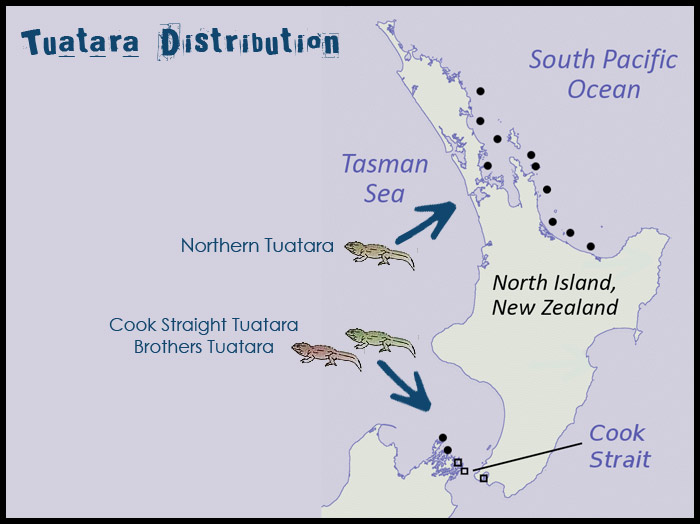Tuatara
Sphenodon punctatus
An Ancient Reptile
The tuatara, or Northern Tuatara, is an ancient surviving reptile that connects distantly to other reptiles. It looks superficially like most other lizards, but it is only distantly related.
Where does the Tuatara live?
Tuataras are found on remote islands off North New Zealand. There are approximately 31 islands where the tuatara has been found, suggesting that it was likely found on the main island of New Zealand at one point. Current conservation efforts are in place to help eradicate Polynesian rats from the outer islands to make sure they don’t pose a threat to existing tuataras.
Reproduction
Tuataras reproduce extraordinarily slow! It takes around 10 years for them to reach sexual maturity, at which time they give birth to one offspring every four years! At this slow rate of reproduction they are extremely vulnerable to extinction.
How long does a Tuatara live?
Tuataras can live for more than one hundred years, although this is often difficult to measure as few have been kept in captivity for such a long time.
Related Topics
An Ancient Reptile
The tuatara, or Northern Tuatara, is an ancient surviving reptile that connects distantly to other reptiles. It looks superficially like most other lizards, but it is only distantly related.
Where does the Tuatara live?
Tuataras are found on remote islands off North New Zealand. There are approximately 31 islands where the tuatara has been found, suggesting that it was likely found on the main island of New Zealand at one point. Current conservation efforts are in place to help eradicate Polynesian rats from the outer islands to make sure they don’t pose a threat to existing tuataras.
Reproduction
Tuataras reproduce extraordinarily slow! It takes around 10 years for them to reach sexual maturity, at which time they give birth to one offspring every four years! At this slow rate of reproduction they are extremely vulnerable to extinction.
How long does a Tuatara live?
Tuataras can live for more than one hundred years, although this is often difficult to measure as few have been kept in captivity for such a long time.

































































































